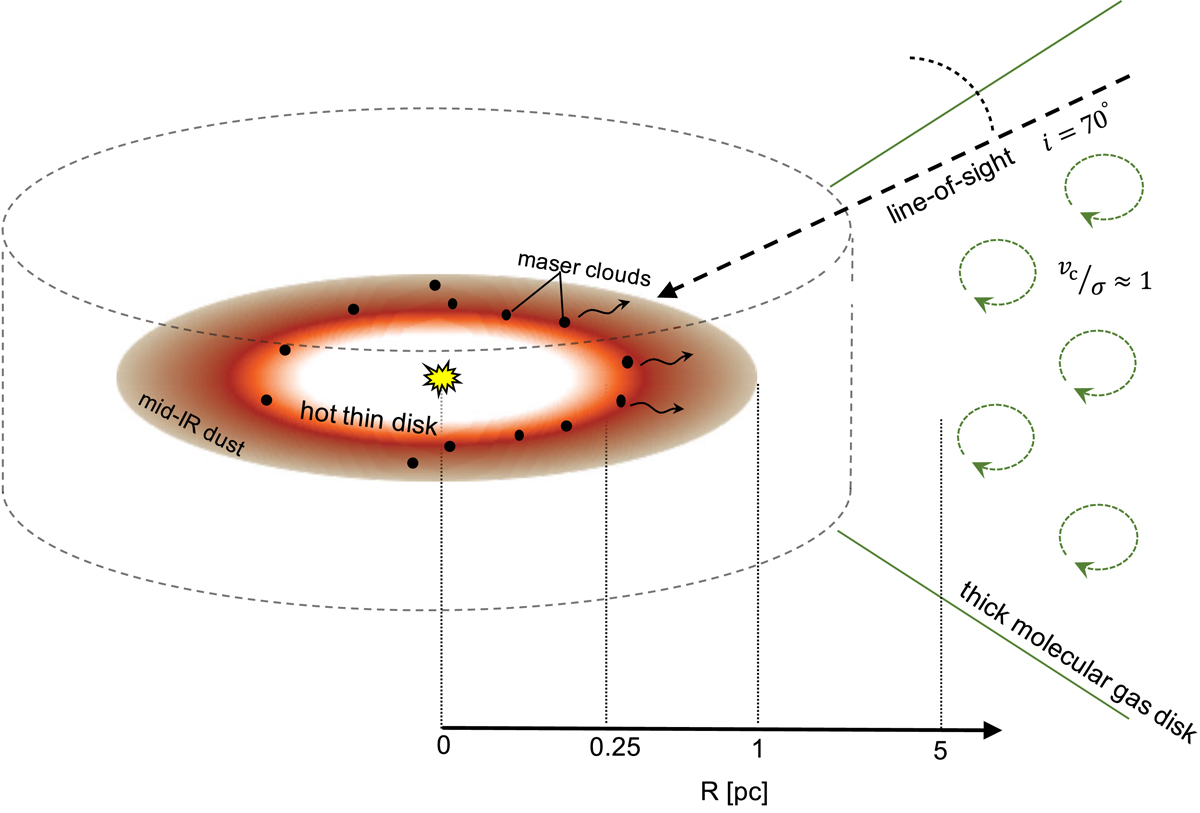Fig. 7.

Sketch of the observed central structures. The K-band emission traces the inner rim of a thin disc of hot gas and dust, at or close to the dust sublimation radius r ≈ 0.24 pc. The inner water masers are cospatial with the hot K-band dust. The masers stretch out to r ≈ 1 pc (Gallimore et al. 2001). MIR observations show warm dust on similar scales as the outer masers (e.g. Raban et al. 2009), likely originating from the disc periphery. ALMA observations of HCN and HCO+ show a turbulent structure, which rotates in the opposite direction as the maser disc (Imanishi et al. 2018). The vc/σ of the molecular gas structure argues for a thick disc, which contains enough gas mass to reach column densities of NH ≈ 1023 cm−2 that screen the central region by AV ≈ 90 (AK ≈ 5.5) from the observer.
Current usage metrics show cumulative count of Article Views (full-text article views including HTML views, PDF and ePub downloads, according to the available data) and Abstracts Views on Vision4Press platform.
Data correspond to usage on the plateform after 2015. The current usage metrics is available 48-96 hours after online publication and is updated daily on week days.
Initial download of the metrics may take a while.


